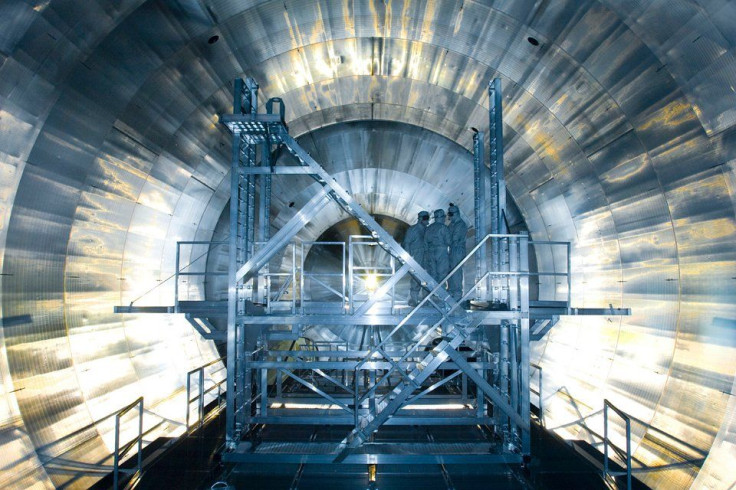Neutrino Mass: Germany’s KATRIN Experiment Aims To Weigh The Universe’s Lightest Particle

What is the mass of a neutrino — the universe's lightest known particle?
At first glance, it may seem like a straightforward question — one that can be easily answered. In reality, however, determining the mass of these particles, which were once described as “the most tiny quantity of reality ever imagined by a human being,” is something easier said than done.
On Friday, in order to accurately determine the mass of a neutrino, scientists at the Karlsruhe Institute of Technology in Germany switched on a 60 million euro ($66 million) machine — the Karlsruhe Tritium Neutrino experiment (KATRIN).
Researchers at the KATRIN facility, which contains a 220 ton spectrometer at its core, will aim to determine the exact mass of these ghostly particles over the next five years.
“If everything works as planned, I think we'll have very beautiful results in 2017,” Guido Drexlin, a co-spokesman for KATRIN, told Symmetry magazine.
Neutrinos are perhaps the most exotic and least understood of all known subatomic particles. Produced by the decay of radioactive elements, these particles rarely, if ever, interact with matter, making them extremely hard to detect and study. Every second, trillions upon trillions of neutrinos traveling at nearly the speed of light pass through Earth.
As a result, for the longest time, scientists thought neutrinos were massless. Even the Standard Model of particle physics, which describes three of the four known fundamental forces of nature, says that neutrinos do not have mass.
However, this belief was overturned when neutrinos were discovered doing something weird — oscillating, or switching “flavors.”
Neutrinos are known to have three different types or “flavors” — the electron neutrino, the muon neutrino and the tau neutrino. The fact that each of these flavors can change into the other, oscillating spontaneously as they travel over long distances, suggests that neutrinos exist in different mass states — something that pokes a hole in the Standard Model.
In order to narrow down the neutrinos’ mass range, the KATRIN experiment will measure the energy of electrons released during the decay of unstable tritium atoms. In theory, if this mass is accurately measured and then be subtracted from the total mass of the atom, what’s left should be the mass of a neutrino.
Current estimates suggest that neutrinos may have a mass of roughly 2 electronvolts. In comparison, the electron has a mass of 511,000 electronvolts. KATRIN, with its peak sensitivity of 0.2 electronvolts, is therefore, particularly suited for the task.
“The ‘ghost particle of the Universe’ is a key to open issues in science on many scales, linking the microcosm of elementary particles to the largest structures in the Universe,” the KATRIN website explains on its homepage. “Their tiny mass is a clear indication for physics beyond the standard model of elementary particle physics.”
© Copyright IBTimes 2024. All rights reserved.






















